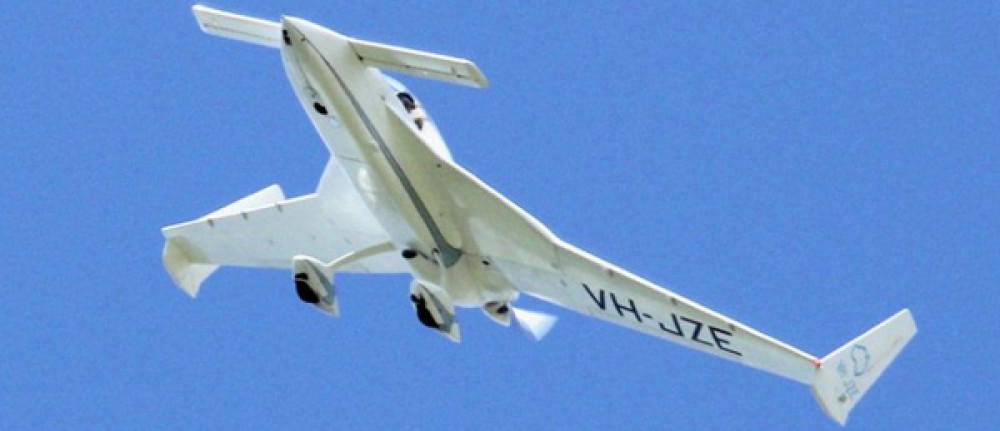Today was all about continuing on with the myriad of layups to get the rudder cable conduit sleeves (aka “shark tubes”) and some of the final oil cooler tasks completed.
I started off by pulling the cured right “shark tube” off the 3/16″ Nyla-flow rudder conduit.
I then pulled the peel ply (pic #1) and then cleaned up the right “shark tube” (pic #2).
I then added the second CF sleeve (pic #1) and then wetted it out and peel plied this final CF sleeve for the right rudder cable conduit (pic #2).
On the left rudder cable conduit, I pulled the cured “shark tube” with the initially trimmed mounting flange.
I found an interesting characteristic of using the Fein saw outside: flies, bees and pretty much any flying creature go crazy over the sound of the Fein saw buzzing away. The main unwanted trespassers during my cutting ops have been flies, but towards the last of my cuts on the left “shark fin” mounting flange was this little leaf bug guy… so I grabbed a shot of this friendly little critter.
After drilling a #10 mounting hole in the left “shark tube” mounting flange, l then test fitted the left “shark tube” with a Clickbond set in place (pic #1).
I then prepped and affixed the left “shark tube” Clickbond onto the CS spar with flox and secured it in place with duct tape (pic #2).
I then switched gears a bit and laid up a ply of BID across the bottom face of the front oil cooler “bridge” wall, overlapping onto the front scoop cover and down onto the inside scoop surface. I then peel plied the layup.
Not too long after I finished the above layup, I then pulled the left “shark tube” and cleaned up the floxed-in-place Clickbond (pic #1). I then laid up 3 plies of BID over the Clickbond to secure it. I then peel plied the layup (pic #2).
Back over on the right side I pulled the peel ply and cleaned up the “shark tube” with its cured second CF sleeve.
I then remounted the right “shark tube” and laid up its BID and CF mounting flange. I then peel plied the mounting flange.
To be clear, these completed shark tubes provide the final piece of the puzzle in what holes need to be made on the Titanium CS spar outriggers (or “wings”) that will be part of the firewall covering. Underneath the Titanium sheeting I’ll affix Fiberfrax to the composite/wood surfaces. In addition, with the ability to no-kidding run the entire rudder cables to the nose of the bird I will then be able to install the rudder/brake pedals.
Finally, after many hours I pulled the peel ply on the right side Clickbond and test mounted the “shark tube.” I have to say that so far I’m happy with how these “shark tubes” are turning out.
Now, that being said, I do reserve the right to either add a third CF sleeve or even an inside-curve wedge (dare I say: “shark fin”) to ensure that the “shark tubes” don’t flex too much during rudder actuation. I’ll test out any flex when I run the fuselage-side rudder cables and also during initial flight ops.
On a final note I’ll add that I weighed the “shark tube” above at a whopping 17 grams, or a fine hair under 0.6 oz. With the right shark tube just a bit shorter, we’re looking at total weight (at this point) for the rudder cable conduit sleeves at just a tad over 1 oz.
Ok, a lot of layups going on here. Also, tomorrow is the start of a holiday weekend and I will be spending some time both on the beach and on the boat before kicking it into high gear on the bottom cowling reconfiguration next week.
Pressing forward!















